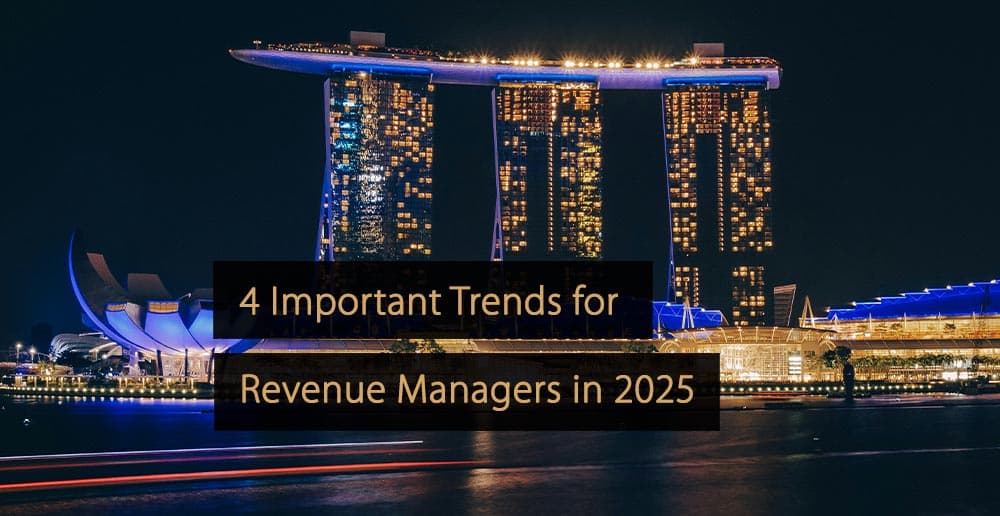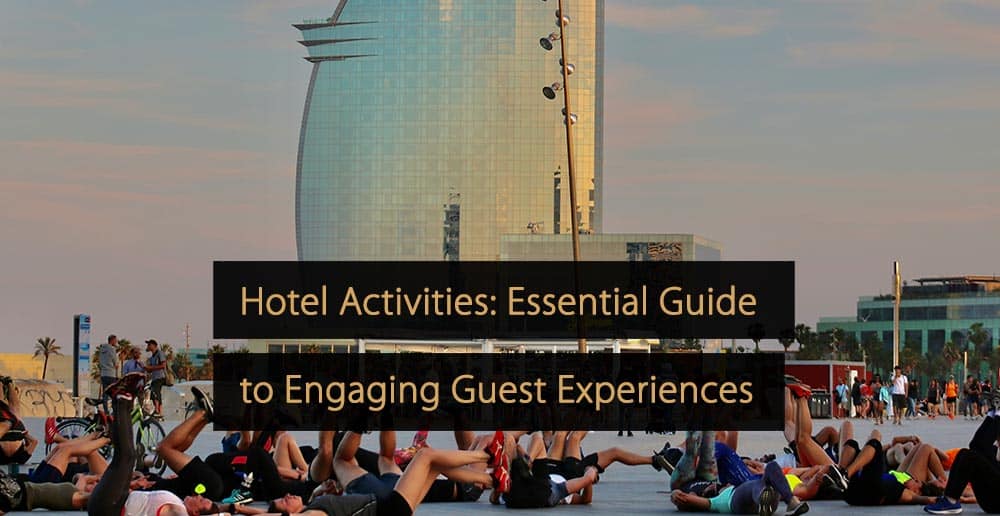A revenue management strategy is a common practice among hotels. What’s less common is having an ancillary revenue strategy, though. Nevertheless, it’s beneficial for hotels to have one. It’s one of the first steps to unlocking a new, powerful revenue stream and improving the hotel’s positioning and branding while enhancing the guest experience. Here’s a closer look at the other attractive benefits and how to implement this strategy.
What Is Hotel Ancillary Revenue, and Why Is It Important?
Hotel ancillary revenue refers to all other revenue from selling extra services and products. In other words, it excludes any revenue made from selling hotel bookings. From room upgrades to spa services and souvenirs bought at your gift shop, there are various ways that you can create other ways to generate money.
Hotels must diversify their revenue streams, especially considering that in 2023 (as per Skift’s research), hotels have paid $47 billion in commissions to OTAs. Direct bookings also come at a cost. To attract direct bookings, you’ll need to invest in paid ads and other forms of digital marketing. A predictable stream of ancillary revenue can make these expenses more sustainable.
Why Do You Need an Ancillary Revenue Strategy at Your Hotel?
Pere Estela, the Global Director of Ancillary Revenue of Iberostar, a leading hotel chain with more than 100 four- and five-star hotels located in the most popular vacation destinations in Europe, Africa, and America, believes that an ancillary revenue strategy is essential for defining the focus and establishing the direction. It will help identify the resources needed and clarify the efforts to be undertaken. Without it, you will miss plenty of monetary and non-monetary opportunities.
The ancillary revenue strategy aims to maximize revenue from the non-core business. Apart from profitability, there are other advantages of having such a strategy:
1. Diversify Hotel Income
Driving profit from room bookings is your primary source of income, but it doesn’t need to be your only source. If you have a plan for driving ancillary revenue, you can unlock other secondary income streams, from selling room upgrades to food and beverage, spa, or bike rental services and packages. In fact, according to Oaky’s research, each day a hotel doesn’t do upselling, it loses 3-5% TRevPAR. That’s a huge missed opportunity.
2. Maximise Guest Experience
Guests have various needs and expectations. Sometimes, these needs couldn’t be further apart. For example, business travelers might need onsite boardroom facilities, while families will appreciate an evening for playing board games.
If a hotel caters to multiple segments, ancillary services can help guests find something they like from various add-on services you offer and have a memorable stay.
If you focus only on your main income source (selling hotel rooms), the overall experience will be rather bland. In this case, your guests will be forced to pay for off-site activities and facilities, which could’ve been spent at your hotel.
3. Get a Competitive Edge in the Market
A well-thought-out ancillary revenue strategy and the services you offer can help your hotel stand out from the crowd. It strengthens your value proposition, showing your unique strategic narrative and features that set you apart from your competitors.
Room options may be similar across hotels, but it’s in the comparison of their supplementary services that their unique features become evident.
4. Better Navigate Changing Conditions of the Market
Having other solid revenue streams helps hotels recover from setbacks faster and adapt offerings to different emerging segments. For example, when there’s a drop in room demand, hotels can rely on room upgrades, early check-ins, and late checkouts, to maintain their bottom line.
Aside from expected changes in seasonality, it can also help hotels tackle unforeseen economic shocks like travel restrictions.
5. Boost Overall Financial Performance
As mentioned earlier, ancillary revenue can positively impact your TRevPAR. If you upsell ancillary services like early check-in, late checkout, or extra breakfast options, the total income that your hotel can generate per available room can increase significantly.
In addition, it can also boost TRevPAR and ADR. You can, for example, upsell room upgrades (instead of offering them for free) which will increase the TRevPAR and ADR. Plus, if you’ve upgraded your facilities to offer extra services, you’ll also be able to charge higher room rates, another win.
How Can You Create an Ancillary Revenue Strategy at Your Hotel?
Creating a strategy is a multi-step process and requires some analysis and planning. According to Pere, the first step is to understand and agree with the company’s top management on the hotel’s positioning.
In short, positioning sums up your hotel and what you want it to become. It involves creating a unique, differentiated image or identity for a hotel in the minds of consumers to make the hotel stand out from its competitors.
All departments — from top management to the front desk — need to have the same narrative. This is essential so they can translate it into offerings catering to the chosen segment.
You should also think about the relevant facilities. What do you currently have available, and what do you need to make your services more attractive to the travelers you’re targeting?
For example, if you want to shift your positioning to gravitate toward millennials and the lifestyle segment, you should consider opening a beach club. On the other hand, if it’s a family-oriented hotel, ensure that you provide family-friendly activities and experiences like a babysitting service and plenty of group activities such as a game night.
You can download the playbook detailing Pere’s approach for a step-by-step explanation.
How Can You Put Your Ancillary Revenue Strategy into Practice?
Alignment across departments is crucial to get started on the right foot. Not only should your top management agree about the hotel’s positioning, but management should also collaborate with the sales department. The sales team knows which markets and segments can generate demand.
Then, to implement and streamline this strategy effectively, ensure that your guests are aware of your ancillaries. Room upgrades, food and beverage deals, and wellness services are popular add-ons you can easily upsell to guests with automation. For example, hotel upsell software can automate pre-arrival offer send-outs and segment deals so that guests can book room upgrades and services before arrival and can also assist your team with upselling more effectively at the front desk.
Now that you know all the key elements of an ancillary revenue strategy, it’s crucial to begin driving revenue from all the facilities and features your hotel offers. With OTA commissions and marketing costs on the rise, this strategic shift is more crucial than ever.
Free Playbook: Mastering Ancillary Revenue
A detailed playbook based on the guidelines Iberostar’s Global Ancillary Revenue Director, Pere Estela, shared. Use his framework to set up a strong ancillary revenue strategy at your hotel.
Click here to download the playbook “Mastering Ancillary Revenue Playbook“.
More Tips to Grow Your Business
Revfine.com is the leading knowledge platform for the hospitality and travel industry. Professionals use our insights, strategies, and actionable tips to get inspired, optimize revenue, innovate processes, and improve customer experience.Explore expert advice on management, marketing, revenue management, operations, software, and technology in our dedicated Hotel, Hospitality, and Travel & Tourism categories.








Leave A Comment